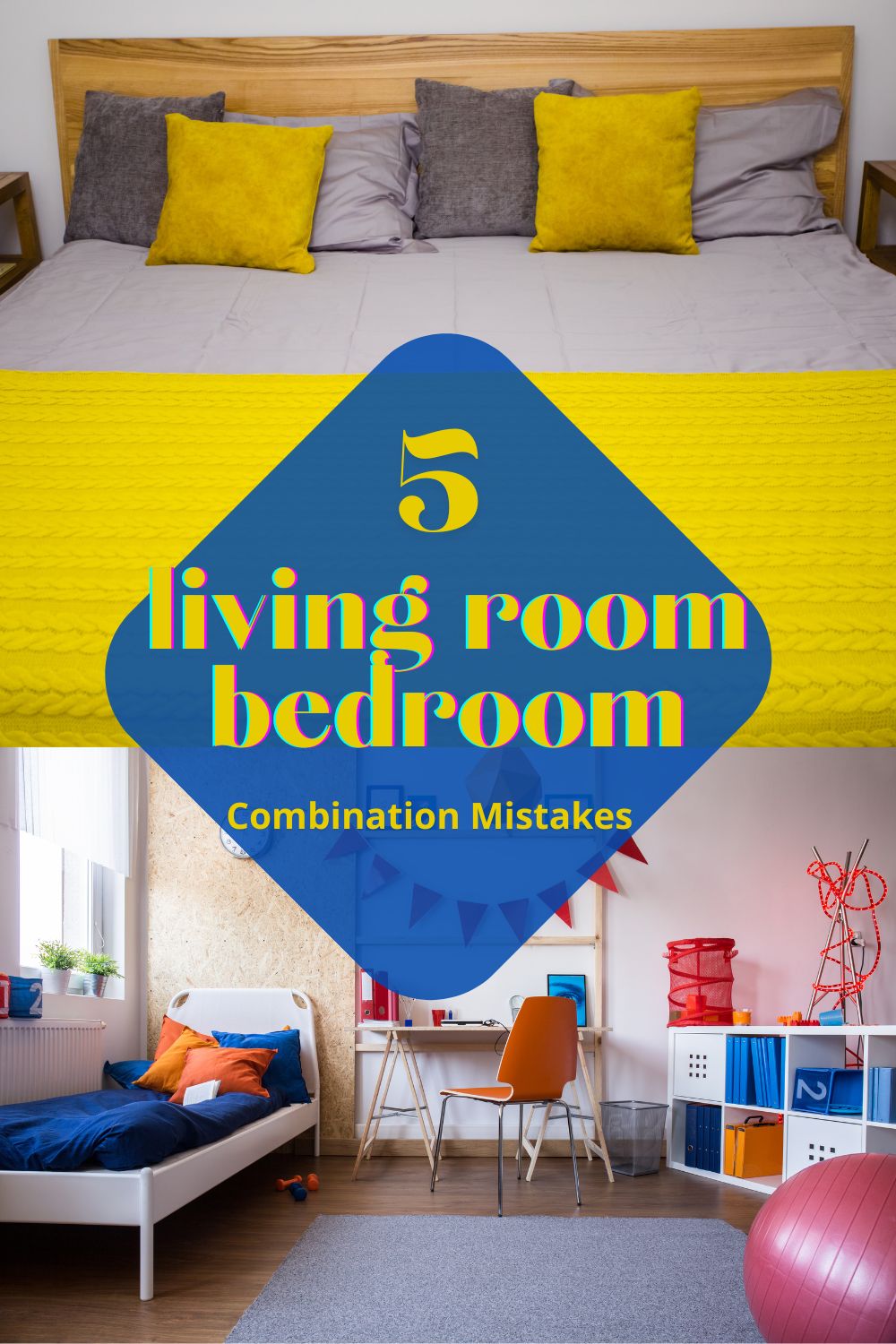5 Living Room Bedroom Combination Mistakes
Combining a living room and bedroom in a single space can be a practical solution for small apartments or studio living. However, this arrangement comes with its own set of challenges. Here are five common mistakes to avoid when creating a living room-bedroom combo:
1. Lack of Clear Zoning

The Mistake: Failing to create distinct areas for living and sleeping.
How to Fix It:
- Use room dividers, bookcases, or curtains to separate the spaces
- Define zones with area rugs
- Arrange furniture to create natural boundaries between living and sleeping areas
2. Neglecting Privacy

The Mistake: Not providing enough privacy for the bedroom area.
How to Fix It:
- Install a folding screen or sliding panels
- Use a canopy bed or bed curtains
- Position the bed so it’s not immediately visible from the entrance
3. Inconsistent Design Aesthetic

The Mistake: Having clashing styles between the living and bedroom areas.
How to Fix It:
- Choose a cohesive color scheme for the entire space
- Use complementary furniture styles throughout
- Incorporate unifying elements like consistent textures or patterns
4. Poor Lighting Control

The Mistake: Using the same lighting for both areas without considering different needs.
How to Fix It:
- Install separate lighting circuits for living and sleeping zones
- Use dimmers to adjust light levels for different activities
- Incorporate task lighting for specific areas (e.g., reading lamps, desk lights)
5. Overcrowding the Space

The Mistake: Trying to fit too much furniture or decor into the combined area.
How to Fix It:
- Choose multifunctional furniture (e.g., sofa beds, storage ottomans)
- Opt for a minimalist approach to decor
- Utilize vertical space with wall-mounted shelves or tall, narrow storage units
By avoiding these common pitfalls, you can create a harmonious living room-bedroom combination that maximizes both functionality and style. Remember, the key is to maintain a balance between the two areas while ensuring each serves its purpose effectively.

